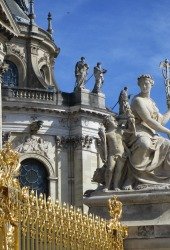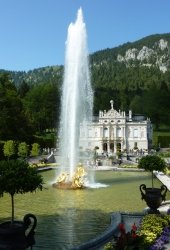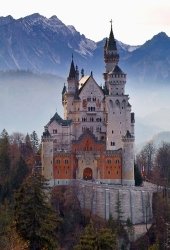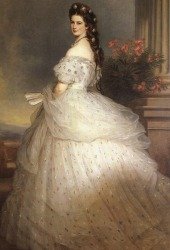Schloss Herrenchiemsee

Schloss Herrenchiemsee, also known as the New Palace or Herrenchiemsee Palace, wasn't built out of some king's need for more square footage (although, who can blame them?).
This architectural masterpiece was the brainchild of the eccentric and flamboyant King Ludwig II of Bavaria. Nicknamed "The Fairytale King," Ludwig was obsessed with all things French, particularly the grandeur of the Palace of Versailles. So, what's a king to do? Build his own mini-Versailles, of course!
DISCLOSURE: I get commissions for purchases made through some of the links in this article.
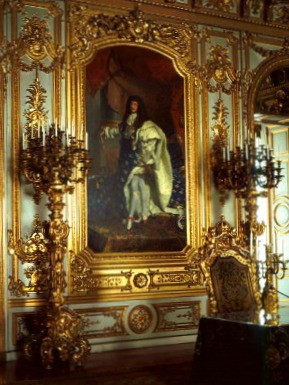 Painting of the Sun King in Schloss Herrenchiemsee
Painting of the Sun King in Schloss HerrenchiemseeA King's Dream Takes Shape: History of Schloss Herrenchiemsee
Construction began in 1878, and let me tell you, Ludwig spared no expense. The island of Herrenchiemsee, the largest in the beautiful Chiemsee lake, was chosen as the location. Sadly, for the island's existing residents (a community of Augustinian canons), this meant packing their bags. But hey, who can argue with a king, right?
He worked with the architect Georg Dollmann again, who also worked on Scholss Neuschwanstein and Schloss Linderhof.
At the highlight of the construction phase, there would be more than 4000 people working on the palace. After seven years in 1885, the construction works stopped because the King run out of money.
Unfortunately, Ludwig's dream palace remained unfinished. By the time he died under mysterious circumstances in 1886, only the main building and parts of the gardens were complete. Only 20 of the 70 rooms are finished. Still, even in its incomplete state, Schloss Herrenchiemsee is a sight to behold.
Schloss Herrenchiemsee is a prime example of Baroque architecture, known for its grand scale, dramatic flourishes, and symmetrical design. Think Versailles on a slightly smaller scale (though "slightly" is a relative term – Herrenchiemsee is still pretty darn big).
The facade is a masterpiece in itself, adorned with elaborate sculptures, statues, and enough gold leaf to make Midas jealous. Inside, the opulence continues. State rooms boast extravagant ceilings, glittering chandeliers, and furniture fit for royalty (or, you know, a king with a serious case of FOMO – Fear of Missing Out on French Grandeur).
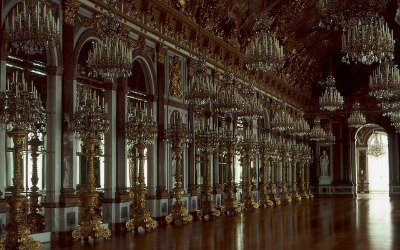 Great hall of mirrors, Schloss Herrenchiemsee
Great hall of mirrors, Schloss HerrenchiemseeSchloss Herrenchiemsee should surpass the palace of Versailles and a lot of rooms are copies of the rooms in Versailles.
One room that deserves a special mention is the Hall of Mirrors, blatantly modelled after the iconic hall in Versailles. This dazzling space features 17 large mirrors reflecting the gardens and creating an endless, shimmering vista. It's enough to make you feel like you've stepped into a scene from a royal ball. . The ceiling of the Hall of Mirrors in Herrenchiemsee show paintings of Louis XIV.
In the centre of the palace is the state bedchamber, just like the one the Sun king used to sleep in and meet his courtiers every morning and every evening.
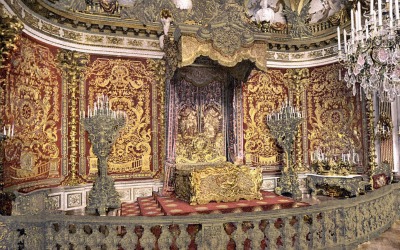 State bedchamber, Schloss Herrenchiemsee
State bedchamber, Schloss Herrenchiemsee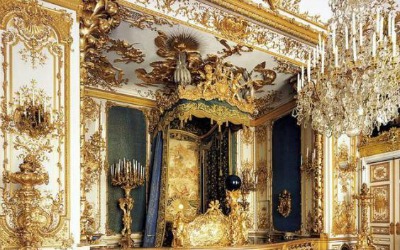
Ludwig II did not use this bedroom, he used a 'smaller' room where the blue ball on the end of his bed would lit his room.
In fact, Ludwig only spends 10 days in the palace in September 1885. After his death in 1886 it was never inhabited again.
A Palace Fit for a Sun King; But Better
While Schloss Herrenchiemsee was undeniably inspired by the grandeur of Versailles, it wasn't just a slavish copy. King Ludwig II, bless his flamboyant heart, wasn't one to settle for the inconveniences of 17th-century French plumbing (or lack thereof). At Versailles Palace, there was no single toilet to be found and no other sanitation whatsoever. Schloss Herrenchiemsee had a central heating system and a heated bathtub.
As in Schloss Linderhof, the palace has a dining room with an elevator table.
This made it possible for Ludwig to dine all by himself, without having to deal with any servants. He had the table set for more than one, so he could invite his imaginary friends, like Marie Antoinette and the Sun King. They were his closest pals, and he loved spending time with them, chatting about art and music.
The palace is also home to the world's largest chandelier made entirely of Meissen Porcelain.
Another novelty can be found at the state staircase. The roof is made of glass, which was a technical highlight at the time and very difficult to construct.
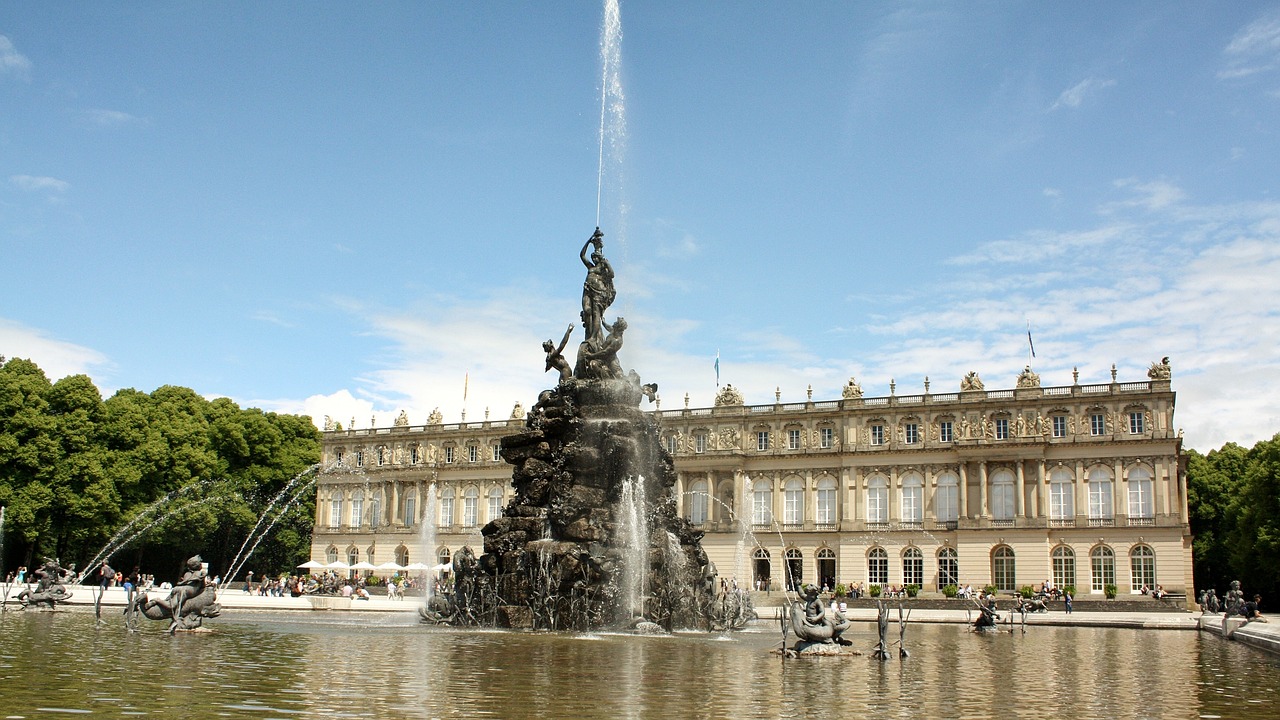 Herrenchiemsee Fountain
Herrenchiemsee FountainPlanning Your Visit to Schloss Herrenchiemsee: Need-to-Know Info
Schloss Herrenchiemsee official website
Entrance tickets can only be bought on-site at the Besucherzentrum (Visitors’ Center) near the boat landing on Herrninsel. Advance reservations are not possible, but opening hours are long so there is seldom much of a wait as tours are frequent.
On the ground floor of the palace you will find the King Ludwig II Museum, where you can learn more about the life of this eccentric and lonely king. You can also see the original construction plans of all of Ludwig’s palaces.
The palace gardens with its fountains and layout inspired by the Versailles gardens are also a highlight of your visit to Herrenchiemsee.
